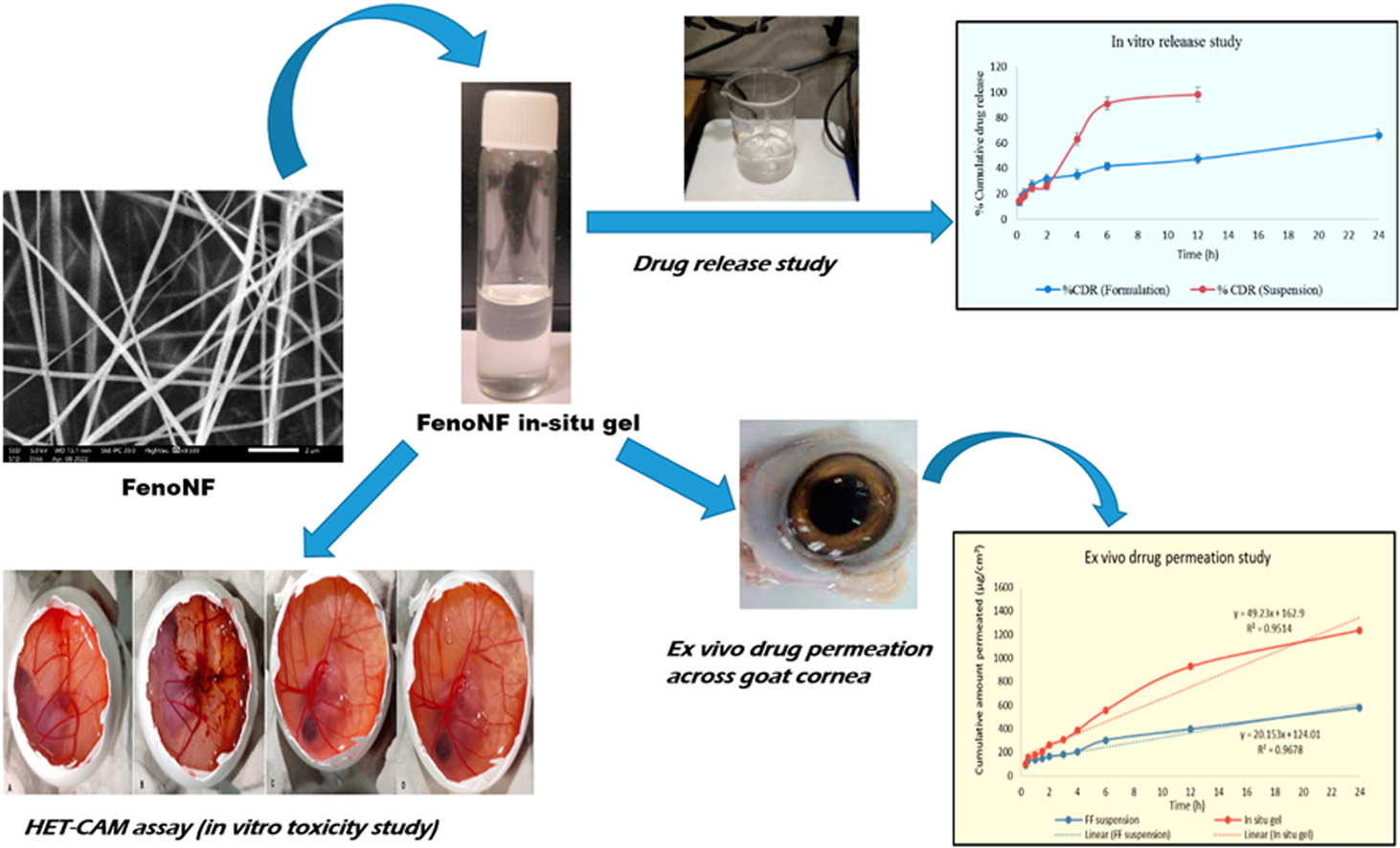Fenofibrate loaded nanofibers based thermo-responsive gel for ocular delivery: Formulation development, characterization and in vitro toxicity study

This research work is to develop nanofiber loaded in -situ gel for the delivery of fenofibrate to the posterior ocular site. Fenofibrate had showed its efficacy in neovascular ocular diseases under clinical studies but its low aqueous solubility makes difficult to develop a suitable ocular formulation. PVA nanofibers were developed by electrospinning method and process parameters such as polymer concentration, voltage, syringe to collector distance, and solvent system were considered for optimization of fenofibrate loaded NF (FenoNF). Optimized nanofibers were characterized for DSC, FTIR, SEM and in vitro drug release.
FenoNF in-situ gel was prepared using a blend of poloxamer 407 and poloxamer 188 and characterized for appearance, pH, gelation temperature, texture and drug release. The ex vivo permeation across goat cornea and CLSM was performed to evaluate efficacy of FenoNF in-situ gel. Formulation was evaluated for toxicity by HET-CAM assay and in vitro hemolytic activity on RBC. PVA at 8% in DMF: water (80:20) solvent system was considered for drug loading and the optimum process parameters were 11.5 kV voltages, 14 cm collector distance and 0.3 ml/h flow rate for electrospinning.
The SEM image of FenoNF showed 228 ± 11.56 nm as mean size and DSC, and FTIR of the formulation showed the presence of drug in amorphous form without any significant interaction with the polymer. FenoNF in-situ gel showed gelation at 34 ± 0.5 °C with sustained drug release for 24 h. CLSM showed better penetration efficiency of formulation compared to plain rhodamine B solution. The FenoNF in-situ gel was found to be safe and non-toxic to cells. Thus, nanofiber in-situ gel could be an approach for fenofibrate delivery to the posterior site of the eye and more patient compatible comparative to other invasive procedures.
Materials
Poloxamer 407 (12,600 g/mol) purchased from Sigma-Aldrich, Germany. Poly Vinyl Alcohol (PVA) (Cold) M.W. approx. 1, 25,000 and Poloxamer P-188 (MW60.09) were purchased from CDH, India. Chitosan– Mol. Wt. 310000–375000 Da with Deacetylated degree (90%) obtained from Sisco Research Lab. Pvt. Ltd., India. Carboxymethyl cellulose, Polyethylene glycol (PEG) and other chemicals used in the experiments were issued from Jamia Hamdard store in-charge and were of analytical grade.
Read more
Jayamanti Pandit, Navneet Chaudhary, Nasr A. Emad, Saeem Ahmad, Pavitra Solanki, Mohd Aqil, Yasmin Sultana, Pratima Solanki, Fenofibrate loaded nanofibers based thermo-responsive gel for ocular delivery: Formulation development, characterization and in vitro toxicity study, Journal of Drug Delivery Science and Technology, 2023, 104935, ISSN 1773-2247,
https://doi.org/10.1016/j.jddst.2023.104935.

